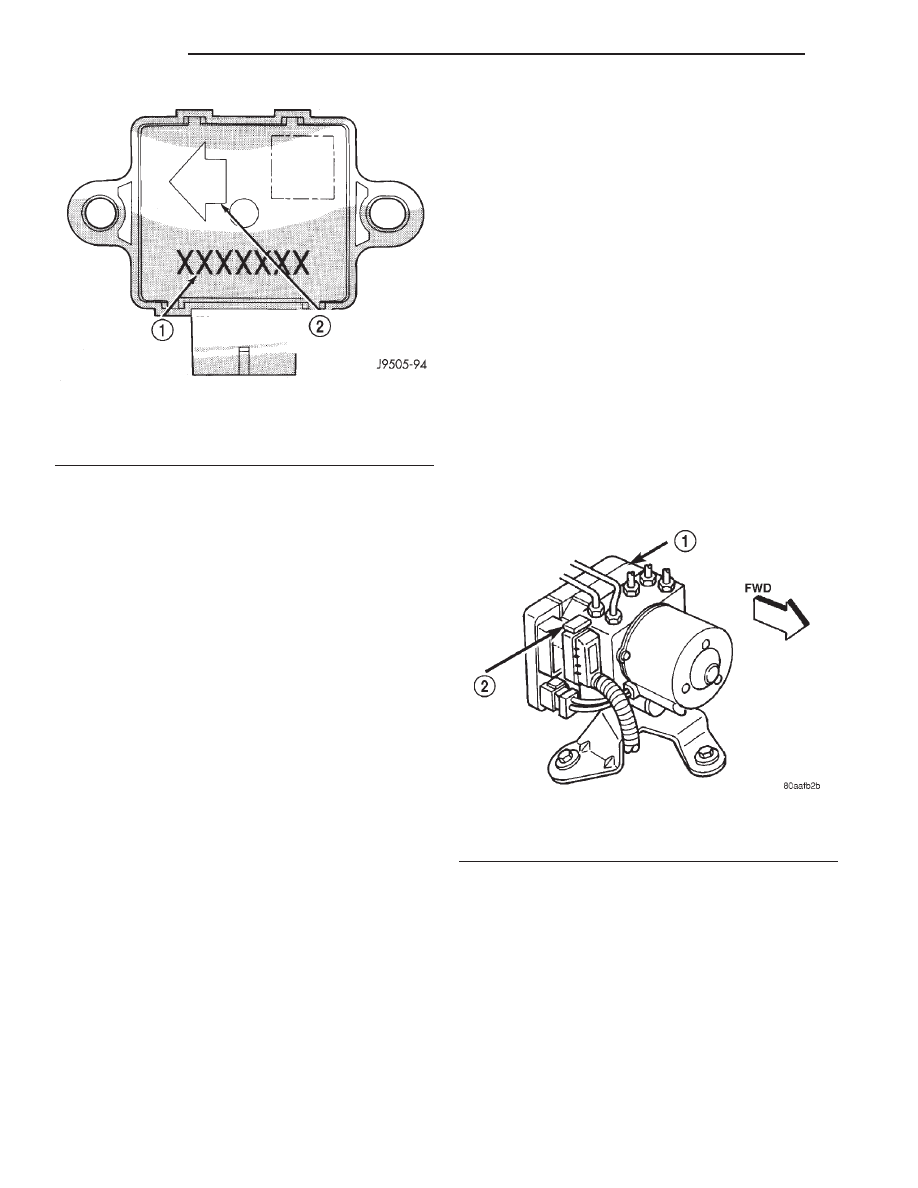Jeep XJ. Manual - part 55

DIAGNOSIS AND TESTING
ANTILOCK BRAKES
The ABS brake system performs several self-tests
every time the ignition switch is turned on and the
vehicle is driven. The CAB monitors the systems
input and output circuits to verify the system is oper-
ating correctly. If the on board diagnostic system
senses that a circuit is malfunctioning the system
will set a trouble code in its memory.
NOTE: An audible noise may be heard during the
self-test. This noise should be considered normal.
NOTE: The MDS or DRB III scan tool is used to
diagnose the ABS system. For additional informa-
tion refer to the Antilock Brake section in Group
8W. For test procedures refer to the Chassis Diag-
nostic Manual.
SERVICE PROCEDURES
BLEEDING ABS BRAKE SYSTEM
ABS system bleeding requires conventional bleed-
ing methods plus use of the DRB scan tool. The pro-
cedure involves performing a base brake bleeding,
followed by use of the scan tool to cycle and bleed the
HCU pump and solenoids. A second base brake bleed-
ing procedure is then required to remove any air
remaining in the system.
(1) Perform base brake bleeding. Refer to base
brake section for procedure.
(2) Connect scan tool to the Data Link Connector.
(3) Select ANTILOCK BRAKES, followed by MIS-
CELLANEOUS, then ABS BRAKES. Follow the
instructions displayed. When scan tool displays TEST
COMPLETE, disconnect scan tool and proceed.
(4) Perform base brake bleeding a second time.
Refer to base brake section for procedure.
(5) Top off master cylinder fluid level and verify
proper brake operation before moving vehicle.
REMOVAL AND INSTALLATION
HYDRAULIC CONTROL UNIT/CONTROLLER
ANTILOCK BRAKES
REMOVAL
(1) Remove negative battery cable from the bat-
tery.
(2) Pull up on the CAB harness connector release
(Fig. 4) and remove connector.
(3) Remove brake lines from the HCU.
(4) Remove HCU/CAB mounting nuts and bolt
(Fig. 5) and remove HCU/CAB.
INSTALLATION
(1) Install HCU/CAB on the mounting studs.
(2) Install mounting nuts and bolt. Tighten to 11.5
N·m (102 in. lbs.).
(3) Install brake lines to the HCU and tighten to
19 N·m (170 in. lbs.).
(4) Install wiring harness connector to the CAB
and push down on the release to secure the connec-
tor.
(5) Install negative battery cable to the battery.
(6) Bleed ABS brake system.
Fig. 3 G-Switch
1 – SWITCH PART NUMBER
2 – ARROW INDICATES FRONT OF SWITCH FOR PROPER
MOUNTING
Fig. 4 CAB Harness Connector Release
1 – CAB
2 – CAB HARNESS RELEASE
5 - 36
BRAKES
XJ
DESCRIPTION AND OPERATION (Continued)